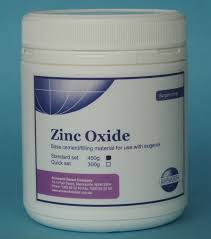Investigating the effect of gas flow rate and amount of zinc oxide nanoparticles on the efficacy of photocatalytic oxidation process of nitrogen oxide from waste airstream
Keywords:
Photocatalyticoxidation, Zinc oxide nanoparticles, Nitrogen oxideAbstract
Nitrogen oxides are one of the most important air pollutants in environment and industrythat due to the adverse health and environmental effects should be refined before discharging into the environment. The photocatalytic oxidation method of nitrogen oxide into nitrogen Dioxide for better absorption insolutions is a promising method for removing of nitrogen oxides. Laboratory system used in this study is included of a source of gas source, mixing chamber, photocatalytic oxidation reactor, measuring system for nitrogen oxidation. Zinc oxide nanoparticles which were simulated by UV-A radiation would be used for photocatalytic oxidation. Inlet concentration of nitrogen oxide and the amount of stabilized nanoparticles in reactor for converting nitrogen oxide into nitrogen dioxide has been investigated. Results showed that the amount of monotonic converting of nitrogen oxide into nitrogen dioxide in the amount of Nano-particles is stabilized 8mg/cm2 for inlet concentration 100,150,200 ppm and respectively equivalent to 15, 26 and 32%. This study showed that increasing concentration of inletnitrogen oxide in system, reduce the capacity of photocatalytic oxidation for converting nitrogen oxide into nitrogen dioxide.
References
Cooper, C. D., & Alley, F. C. (2011). Air Pollution Control: A Design Approach: Waveland Press.
Devahasdin, S., Fan Jr, C., Li, K., & Chen, D. H. (2003). TiO2 photocatalytic oxidation of nitric oxide: transient behavior and reaction kinetics. Journal of Photochemistry and Photobiology A: Chemistry, 156(1), 161-170.
Fujishima, A., Zhang, X., & Tryk, D. A. (2008). TiO2 photocatalysis and related surface phenomena. Surface Science Reports, 63(12), 515-582. doi: http://dx.doi.org/10.1016/j.surfrep.2008.10.001
Hamada, H., Kintaichi, Y., Yoshinari, T., Tabata, M., Sasaki, M., & Ito, T. (1993). Performance of solid acid type catalysts for the selective reduction of nitrogen oxides by hydrocarbons and alcohols. Catalysis today, 17(1), 111-119.
Kuropka, J. (2011). Removal of nitrogen oxides from flue gases in a packed column. Environment Protection Engineering, 37(1), 13-22.
Lee, B. Y., Jayapalan, A. R., Bergin, M. H., & Kurtis, K. E. (2014). Photocatalytic cement exposed to nitrogen oxides: Effect of oxidation and binding. Cement and Concrete Research, 60, 30-36.
Li, K., Liu, S. Y., Huang, C., Esariyaumpai, S., & Chen, D. H. (2002). TiO2 Photocatalytic Oxidation of Butyraldehyde, Ethylbenzene and PCE in the Air through Concentric Reactors. Journal of Advanced Oxidation Technologies, 5(2), 227-232.
Luo, L., Zhang, Y., Mao, S. S., & Lin, L. (2006). Fabrication and characterization of ZnO nanowires based UV photodiodes. Sensors and Actuators A: Physical, 127(2), 201-206.
Moballegh, A. (2006). Synthesis of zinc oxide namoparyicle an its optical survey. Tarbiat Modares University.
Mori, K. (2005). Photo-Functionalized Materials Using Nanoparticles: Photocatalysis [Translated]†. KONA Powder and Particle Journal, 23(0), 205-214.
Oppenländer, T. (2007). Photochemical Purification of Water and Air: Advanced Oxidation Processes (AOPs) - Principles, Reaction Mechanisms, Reactor Concepts: Wiley.
Spaull, A. J. B. (2000a). Surface science – an introduction. Journal of Chemical Technology and Biotechnology, 75(2), 179-186.
Spaull, A. J. B. (2000b). Surface science – an introduction. By JB Hudson, John Wiley & Sons Limited, Chichester, 1998, ISBN 0471 25239 5 xii + 321 pp, price UK £34.95. Journal of Chemical Technology & Biotechnology, 75(2), 179-179. doi: 10.1002/(sici)1097-4660(200002)75:2<179::aid-jctb184>3.0.co;2-o
Todorova, N., Vaimakis, T., Petrakis, D., Hishita, S., Boukos, N., Giannakopoulou, T., . . . Chaniotakis, E. (2013). N and N, S-doped TiO2 photocatalysts and their activity in NO oxidation. Catalysis today, 209, 41-46.
Wang, H., Wu, Z., Zhao, W., & Guan, B. (2007). Photocatalytic oxidation of nitrogen oxides using TiO2 loading on woven glass fabric. [Research Support, Non-U.S. Gov't]. Chemosphere, 66(1), 185-190. doi: 10.1016/j.chemosphere.2006.04.071
Wang, H., Wu, Z., Zhao, W., & Guan, B. (2007). Photocatalytic oxidation of nitrogen oxides using TiO< sub> 2 loading on woven glass fabric. Chemosphere, 66(1), 185-190.
Wark, K., Warner, C. F., & Davis, W. T. (1998). Air Pollution: Its Origin and Control: Addison-Wesley.
Wu, Z., Wang, H., Liu, Y., Jiang, B., & Sheng, Z. (2008). Study of a photocatalytic oxidation and wet absorption combined process for removal of nitrogen oxides. Chemical Engineering Journal, 144(2), 221-226. doi: 10.1016/j.cej.2008.01.025
Yamashita, H., Ichihashi, Y., Anpo, M., Hashimoto, M., Louis, C., & Che, M. (1996). Photocatalytic decomposition of NO at 275 K on titanium oxides included within Y-zeolite cavities: The structure and role of the active sites. The Journal of Physical Chemistry, 100(40), 16041-16044.
Zandaryaa, S., Gavasci, R., Lombardi, F., & Fiore, A. (2001). Nitrogen oxides from waste incineration: control by selective non-catalytic reduction. Chemosphere, 42(5-7), 491-497.

Published
How to Cite
Issue
Section
Copyright (c) 2020 Haji Omid Kalte, Ahmad Jafari Jonidi, Hasan Asilian, Ardalan Soleymanian

This work is licensed under a Creative Commons Attribution-NonCommercial-NoDerivatives 4.0 International License.



